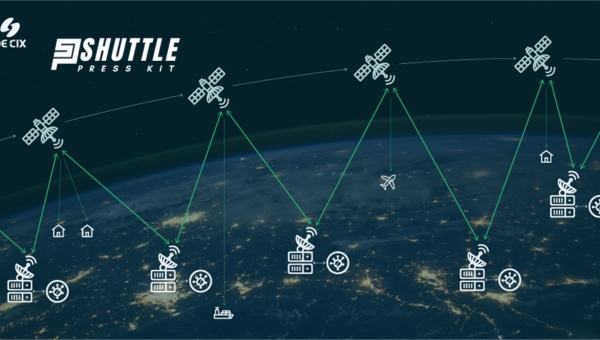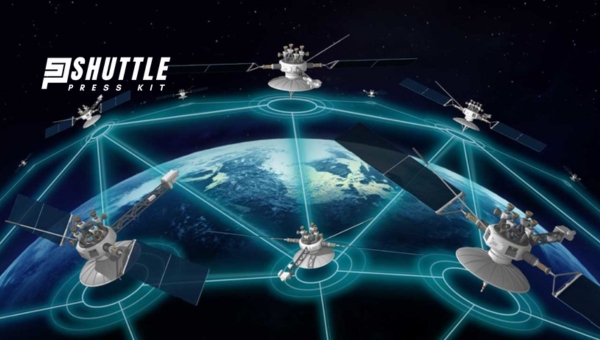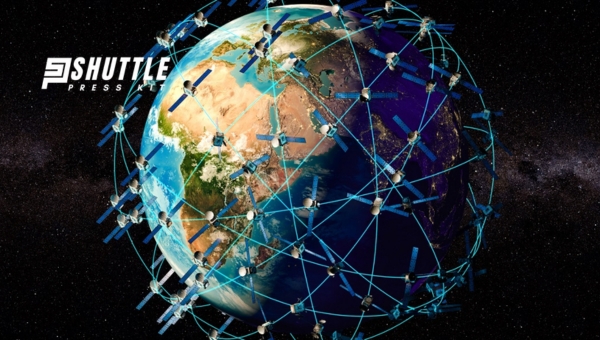Are you keen to know more about the cutting-edge technology floating above our heads? If so, the magic of Low-Earth Orbit Satellites awaits you in this comprehensive article. We’ll dive deep into what these celestial marvels are, their integral role in modern systems, and how they drive advancements across various fields.
Low-Earth Orbit Satellites enhances communication systems, supports global positioning services, aids scientific research and military operations greatly. These space assets dwindle between 180 – 2000 km above the Earth’s surface performing essential tasks that impact our day-to-day life directly. They are sought after for their lower latency in data transmission, affordable launch costs and capacity for real-time data collection.
What Are Low-Earth Orbit Satellites, and How Do They Function?
Low-Earth orbit (LEO) satellites are a network of satellites that revolve around the Earth at altitudes ranging between 180 to 2,000 kilometers. This relatively proximity to the planet’s surface allows these satellites to offer better communication latency compared to their geostationary counterparts, which orbit much higher above the Earth. The reduced distance from Earth also makes it more energy and cost-efficient to launch LEO satellites, making them an increasingly popular choice for various satellite-based services.

To cover extensive areas on the Earth’s surface, LEO satellites are deployed in groups known as constellations. Unlike a single geostationary satellite that can provide coverage over a large swath of the earth due to its high orbital position, LEO constellations must work in tandem to ensure seamless global coverage. This system allows for the continuous transmission of data across the network, providing users with reliable and speedy communication services irrespective of their location on the planet.
Also Read: Who Owns Starlink? – Unveiling the Space Internet Giant
LEO Satellite Internet Providers
Low-Earth Orbit (LEO) satellite internet providers send satellites close to Earth. This makes the internet faster and more reliable than old satellite systems. Think of it like this: The closer the server, the quicker you get your information.

Because these satellites are much closer in space, they can send data at high speeds with less delay. Companies like Starlink, Project Kuiper, and Telesat Lightspeed are working on this technology to give people all over the world access to quick and dependable internet.
Starlink Satellite Internet
Starlink is a well-known name when we talk about new satellite internet services. It’s special because it’s already letting people sign up and get fast internet through satellites close to Earth. Users love it for its quick speeds and that there isn’t a limit on how much data they can use, but some say it’s quite costly. Also, not everyone can get Starlink right now because there’s a lot of demand but not enough equipment for everyone who wants it.
| Feature | Description |
|---|---|
| Provider | Starlink (SpaceX) |
| Service Type | Satellite Internet |
| Launch Date | Initial launches began in 2019 |
| Aim | Provide high-speed internet to underserved and remote areas |
| Constellation | Low Earth Orbit (LEO) satellites |
| Satellites | Thousands planned; hundreds currently in orbit |
| Coverage | Global coverage aimed, with focus on North America, Europe, and Oceania initially |
| Internet Speeds | Expected ranges from 50 Mbps to 150 Mbps |
| Latency | Approximately 20-40 milliseconds |
| Cost | Varies by region; setup fees plus monthly subscription |
One big benefit is that Starlink tries to make the internet better than what most people are used to with old satellite connections. However, getting your hands on a Starlink setup might require patience due to its popularity and limited availability in some regions.
Project Kuiper Satellite Internet
Project Kuiper, started by Amazon, is another upcoming LEO satellite service aiming to make the internet better and cheaper for everyone everywhere. The plan includes sending prototype satellites into space in 2023 as a test before launching thousands more into orbit by 2029 at the latest. The idea here is that once everything’s up and running, users across the globe will have access to speedy internet without breaking the bank.
| Feature | Details |
|---|---|
| Developer | Amazon |
| Objective | Provide broadband internet globally |
| Number of Satellites | Approximately 3,236 satellites planned |
| Orbit | Low Earth Orbit (LEO) |
| Operational Altitude | Around 590 km to 630 km |
| Frequency Band | Ka-band (26.5–40 GHz) |
| Regulatory Approval | Federal Communications Commission (FCC) approved |
| Launch Partner | United Launch Alliance (ULA) initially |
| Status | Under development |
| Infrastructure | Ground stations to manage and control satellite links |
| Potential Speed | Up to gigabit speeds |
| Coverage | Global coverage aimed, with focus on underserved areas |
We’re still waiting for Project Kuiper because no satellites have been launched yet based on current information up until Amazon has particular deadlines set by FCC – they must launch half of their proposed network by 2026 with full completion anticipated around 2029 making eager customers wait a bit longer before they can enjoy what Project Kuiper has promised.
Telesat Lightspeed Satellite Internet
Founded back in 1969, Telesat has been providing satellite services for decades but primarily focuses on companies rather than everyday folks at home wanting fast web surfing speeds until recently with their Telesat Lightspeed project introducing super-fast connections globally but particularly benefiting remote areas where traditional broadband fails drastically or doesn’t exist at all employing nearly 200 advanced orbitals.
| Feature | Description | Benefit |
|---|---|---|
| Coverage | Global low Earth orbit (LEO) satellite constellation | Provides internet access worldwide |
| Low Latency | Reduced data travel time compared to GEO satellites | Ideal for real-time applications |
| High Throughput | Capacity for large data transfers | Faster download and upload speeds |
| Scalability | Easily expandable constellation | Can grow to meet increasing demand |
| Sustainability | Designed for deorbit at end of life | Reduces space debris risk |
| Security | Encrypted data transmission | Enhances data protection |
| Reliability | Multiple satellites in each orbital plane | Consistent service even if one satellite fails |
The catch here? Well, Telesat hasn’t made this service available yet directly for individuals like us wanting faster home wifi; instead, they’re looking at businesses needing robust global connection options promising unrivaled data transfer rates hinting towards an impressive upgrade over existing competitors once fully operational likely revolutionizing how we perceive remote work efficiency or global operations altogether.
How Can LEO Satellite Communications Transform Industries?
Low Earth Orbit (LEO) satellite technology is poised to revolutionize global communications, offering faster, more reliable connectivity across various sectors.

From enhancing autonomous transportation systems to providing robust emergency response capabilities, LEO satellites are set to drive significant transformations. Here are eight key ways these advancements will impact different industries:
- Enabling Real-Time Global IoT Deployment: By providing extensive coverage and high-speed connectivity, LEO satellites facilitate the deployment of Internet of Things (IoT) devices in remote and underserved areas, advancing sectors like agriculture and logistics.
- Improving Autonomous Vehicle Communications: LEO satellites deliver the low latency needed for real-time data exchange critical for autonomous vehicle operations, including updating maps and traffic conditions which enhance safety and efficiency.
- Advancing Emergency Medical Services: Reliable satellite communications enable remote diagnostics and real-time data transfer between ambulances and hospitals, improving patient outcomes in critical care scenarios.
- Enhancing Maritime and Aviation Connectivity: For maritime vessels and aircrafts, LEO satellites ensure continuous, high-speed internet access that improves navigation, onboard customer experience, and crew communications.
- Boosting Rural Internet Access: In regions where traditional broadband infrastructure is lacking or cost-prohibitive to deploy, LEO satellites provide a viable solution for high-speed Internet access that helps bridge the digital divide.
- Increasing Disaster Resilience: By maintaining communication capabilities in the wake of infrastructure damage from natural disasters or other catastrophic events, LEO networks play a crucial role in resilient emergency response strategies.
- Facilitating Smarter Logistics Management: Continuous tracking enabled by satellite technology ensures that logistics companies can monitor assets globally in real time—essential for cold-chain management among others.
- Providing Foundations for Smart Cities: Satellite-based connectivity supports the development of smart cities by enabling services such as enhanced public transport systems through better traffic management analysis provided via IoT sensors.
Challenges in Deploying Low Earth Orbit (LEO) Satellite Constellations
LEO satellite constellations promise to revolutionize global communication by providing widespread, high-speed internet coverage. However, deploying and maintaining such networks comes with significant technical challenges.

The unique environment of space, combined with the technical complexity of operating numerous small satellites, presents a variety of hurdles that must be overcome to ensure efficient and reliable service.
- Limited Orbital Slots: The available spaces for LEO satellites in Earth’s orbit are limited and assigned on a first-come, first-served basis. This constraint restricts the number of possible satellite deployments and places pressure on operators to launch their constellations within tight time frames.
- Radio Frequency Interference: Securing access to appropriate radio frequencies is a critical challenge due to the crowded nature of desirable spectral bands. Competing signals can interfere with each other, complicating communication links between ground stations and satellites.
- Proprietary Technology Issues: Different operators use proprietary technologies which can lead to interoperability issues. This restricts the ability for systems to work together seamlessly across different platforms or providers.
- High Launch and Maintenance Costs: Building, launching, and maintaining LEO satellite constellations require significant financial investment. Satellites need frequent replacements due to limited lifespans or failures induced by harsh space conditions such as solar storms.
- Space Debris Risks: LEO orbits are increasingly crowded with both active satellites and space debris. Collisions can damage or destroy operational satellites leading significant costs not only financially but also in terms of data discontinuity impacts on service reliability.
- Impact of Solar Weather: Small LEO satellites are particularly susceptible to solar storms which can cause functional disruptions or loss. Protective measures against solar radiation increase costs while reducing payload efficiency.
- Regulatory Compliance Pressures: Operators must navigate complex international regulations regarding spacecraft launches, orbital placements, frequency use, etc., ensuring continuous compliance as standards evolve over time.
Successfully addressing these challenges is essential for leveraging the full potential of LEO satellite technologies in enhancing global connectivity frameworks effectively.
Also Read: Starlink Volcano Mount Guide: Easy DIY Installation Tips
FAQs
How far up are low earth orbit satellites?
Low-Earth Orbit satellites typically operate at an altitude of 1,200 miles (2,000 kilometers) or less above the Earth.
What is the lifespan of a low earth orbit satellite?
The average lifespan of a Low-Earth Orbit satellite varies greatly but can range between 5 to 15 years depending on its build quality and maintenance.
How many low-earth orbit satellites are currently in space?
As of now, there are thousands of Low-Earth Orbit satellites in space, with new ones being launched regularly for various applications.
Can you see low-earth orbiting satellites from Earth?
Yes, under the right conditions and with some aid like binoculars or a telescope, one can observe Low-Earth Orbiting satellites passing overhead from Earth.
What gives Low-Earth Orbit Satellites the edge over geostationary satellites?
Low-Earth Orbit Satellites offer lower latency for signal transmission and can provide more detailed real-time data as they are closer to the Earth’s surface.
Also Read: Starlink Ethernet Adapter: Effortless Setup, Honest Review!
Conclusion
Low-Earth Orbit Satellites are a vital cog in the wheel of modern technology. Their pivotal role in communication, military applications, and scientific research can’t be ignored. The technological prowess of these satellites, coupled with their affordability and efficiency for close-range observations make them an indispensable resource.
However, there are hurdles to surmount; like maintaining the optimal condition of these satellites given their short lifespan as well as handling potential hazards upon re-entry into Earth’s atmosphere.
